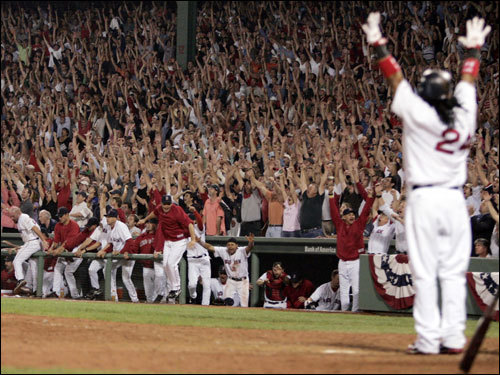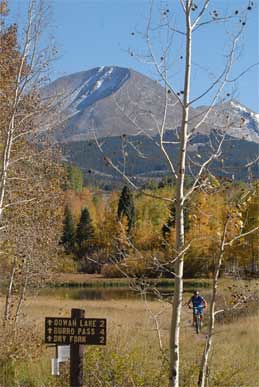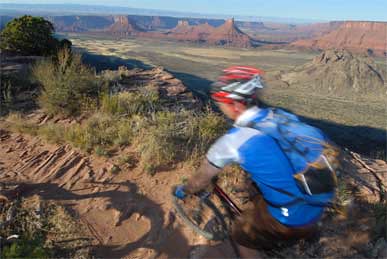
Mountain Love
 SkiPress editor and talented writer Peter Kray took over the editor position at Mountain Gazette this year and he has been hard at work updating the magazine to reflect the changes in mountain-town culture. I don’t envy him the job. The Gazette has long been a bastion of free-thinking, non-consumer mountain town authenticity and former editor M. John Fayhee, who is still contributing as editor-at-large, infused the Gazette with a swaggering, Beat-inspired sensibility that gave the publication credence with mountain-town curmudgeons. But the truth is that mountain towns have irrevocably changed over the past decade. Those crunchy, isolated escapes where soul-seekers went to live off their own elk meat and backcountry ski all winter continue to transform into expensive real estate inhabited by retirees, trust-funders, and core outdoor sport junkies (66% of the homes in Summit County, Colorado, are second homes). Those cultural shifts are an inescapable dynamic of the mountain town experience now, and Kray has made changes that he thinks will make the mag more relevant, incorporating both the classic mountain town freaks and the new blood. So it’s no surprise that Kray, a Colorado native and thoughtful writer who is as “authentic” as they come, has been inundated with letters accusing him of sucking the soul out of the publication—the letter writers have taken the most umbrage with the new real estate column, which is supposed to highlight property that dirtbags could actually afford. I have been lucky enough to work with Kray over the past few months, writing a “deep winter” gear piece, a February cover story on “mountain love” that examines how difficult it is to maintain relationships in mountain towns where the communities themselves are so transitory, an interview with Black Diamond’s Peter Metcalf, and an upcoming piece on the lost art of sharpening a cross-cut saw. And… I have been assigned one of the dreaded real estate columns.
SkiPress editor and talented writer Peter Kray took over the editor position at Mountain Gazette this year and he has been hard at work updating the magazine to reflect the changes in mountain-town culture. I don’t envy him the job. The Gazette has long been a bastion of free-thinking, non-consumer mountain town authenticity and former editor M. John Fayhee, who is still contributing as editor-at-large, infused the Gazette with a swaggering, Beat-inspired sensibility that gave the publication credence with mountain-town curmudgeons. But the truth is that mountain towns have irrevocably changed over the past decade. Those crunchy, isolated escapes where soul-seekers went to live off their own elk meat and backcountry ski all winter continue to transform into expensive real estate inhabited by retirees, trust-funders, and core outdoor sport junkies (66% of the homes in Summit County, Colorado, are second homes). Those cultural shifts are an inescapable dynamic of the mountain town experience now, and Kray has made changes that he thinks will make the mag more relevant, incorporating both the classic mountain town freaks and the new blood. So it’s no surprise that Kray, a Colorado native and thoughtful writer who is as “authentic” as they come, has been inundated with letters accusing him of sucking the soul out of the publication—the letter writers have taken the most umbrage with the new real estate column, which is supposed to highlight property that dirtbags could actually afford. I have been lucky enough to work with Kray over the past few months, writing a “deep winter” gear piece, a February cover story on “mountain love” that examines how difficult it is to maintain relationships in mountain towns where the communities themselves are so transitory, an interview with Black Diamond’s Peter Metcalf, and an upcoming piece on the lost art of sharpening a cross-cut saw. And… I have been assigned one of the dreaded real estate columns.
A Day in the Office
Gear testing is tough work…
Videophilia
It’s official. We are a nation more interested in video games than getting outdoors. At least according to the latest study from the University of Illinois at Chicago.
Pergams and Patricia Zaradic, a fellow with the Environmental Leadership Program, Delaware Valley in Bryn Mawr, Pa., had previously reported a steady decline in per capita visits to U.S. national parks since the late 1980s — which correlated very strongly with a rise in playing video games, surfing the Internet and watching movies. The researchers call this recent shift to sedentary, electronic diversions “videophilia.” And they don’t see it as healthy progress.
“The replacement of vigorous outdoor activities by sedentary, indoor videophilia has far-reaching consequences for physical and mental health, especially in children,” Pergams said. “Videophilia has been shown to be a cause of obesity, lack of socialization, attention disorders and poor academic performance.”
No real surprise. But how to reverse the trend?
I interviewed Larry Selzer, president of the Conservation Fund, for the OR Show Dailies and think he’s making a good start by rethinking the way different ethnic and economic demographics relate to the outdoors. 
Conservation Fund President Larry Selzer speaks out on how youth and minorities can save the outdoors—if we would just listen
By Doug Schnitzspahn
When Outdoor Industry Association assembled the most dynamic CEO-level minds in the industry at the Though Leader Conference during Outdoor Retailer Summer Market 07, Larry Selzer was the featured speaker. Since the big problem the meeting focused on was how to get more kids outdoors, the choice made perfect sense. Selzer is the president of the Conservation Fund , a non-profit that has preserved Read the rest of this entry »
Brooklyn to Beaver Creek
I wrote this gear/fashion piece for the January issue of Outside on the emerging trend of urban-style jackets that use technical outdoor fabrics (Gore-Tex, Primaloft, merino wool, etc.). I like to refer to it as the Brooklyn-to-Beaver-Creek look. To be honest, I’m surprised that so few companies have moved into the niche. There’s nasty weather in places like New York, Boston, Chicago, and Seattle and you do a lot of walking in the city—but you don’t want to go out looking ready to ski the Middle Teton. I expect to see more companies once thought of as sport- or outdoor-specific like Burton, Merrell, and even bike-freaks Swobo leveraging into the urban style market—especially Burton, who seem to understand how to boost the value of the brand by simultaneously promoting urban sensibility on the hill and snowboard credibility on the street. But Scapegoat, which was recently purchased by Prana, may be the most intriguing, since it positions itself simply as a hip, urban brand that uses performance fabrics, defining itself by a lifestyle rather than activity. You can read the piece at Outside’s web site.

While you are there, you can also take a look at the videos Outside Buyer’s Guide editor Sam Moulton and I filmed at Neptune Mountaineering the day before we gave a presentation on travel writing at the Magazine Conference here in Boulder back in October.
War is Over
I stayed home from school the day John Lennon was shot in December 1980. I was 11 years old and probably more idealistic— and at times, I think, smarter—than I am now. This Christmas I heard “Happy Christmas (War Is Over)” while I was playing with my three-year old daughter and those words hit me harder than ever before. Maybe it’s because we have been waging never ending war. Maybe it’s because I now have two children and value life and the prospects of their future even more than ever. Or maybe it’s because I suddenly realized how I am letting my idealism slip away. I used to be uncompromising in the face of what I deemed was cruelty and injustice. Now, I make excuses. I roll my eyes at politicians who call for pulling all troops out of Iraq. I crate a web of justifications for not making more green choices in my life (too expensive, too difficult). Am I growing older and wiser, seeing the complications, contradictions, ambiguity, and impossibility of things? Or am I being lazy. Great change can’t come from apathy and self-service. No more excuses. Yeah, I know how the world works, I know. What I love about the Lennon song is that it makes change, hope, peace possible—a choice. War is over. If you want it.

Hampsten on Elba
Pick up a copy of the latest issue of Outside’s Go.
 I wrote the cover story about a cycling trip I took with Andy Hampsten in Italy this summer. Hampsten, who is the only American to ever win the Giro d’Italia, runs tours in Italy that merge intense riding with an intelligent immersion in Italian culture through his company Cinghiale, named for free-wheeling wild Tuscan pigs. But beyond that, Hampsten’s a thoughtful, self-effacing, energetic figure, and a strong proponent of cleaning up the sport. It was an honor to ride (and drink wine) with him.
I wrote the cover story about a cycling trip I took with Andy Hampsten in Italy this summer. Hampsten, who is the only American to ever win the Giro d’Italia, runs tours in Italy that merge intense riding with an intelligent immersion in Italian culture through his company Cinghiale, named for free-wheeling wild Tuscan pigs. But beyond that, Hampsten’s a thoughtful, self-effacing, energetic figure, and a strong proponent of cleaning up the sport. It was an honor to ride (and drink wine) with him.

Here’s a quote from Hampsten that did not make the story, but addresses how he thinks the sport can reclaim its image:
“It’s not easy but it’s very simple. The riders have to say, ‘let’s clean it up.’ They have to realize it. It has been dirty since the 80s. A lot of people quit because they don’t want to deal with it, but if the riders said, ‘lets clean it up from within, not from the outside,’ then the sport is going to be more interesting than ever.”
And another on the pure psychological pressure of racing the Tour de France:
“It’s three weeks of absolute physical, mental, and psychological pressure. If it’s 23 days of racing, 18 of those are just staying out of trouble. There was never a second when I shouldn’t have been calculating what I was doing, or thinking about a competitor, or thinking about how my competitors were thinking about me. You just go nuts analyzing everything. It’s exhausting. But I learned how to relax until the gun went off and then deal with the variables.”
Outside also published a Q&A with me about the trip. LINK
You can read the story here. LINK
Baseball Has Been Very, Very Bad to My Work Schedule
How can I be expected to work with this happening? This has been a fantastic baseball postseason so far—swarms of locusts descending on the Yankees, Manny Ramirez putting the emphatic in walkoff, the Yankees clawing back in it, Josh Beckett and Curt Schilling pitching like Koufax and Drysdale, small markets knocking off Chicago and Philadelphia, the Rockies. The Rockies!? A good baseball story always has backstory (see Red Sox, 2004), and it’s hard to convey how strange this run has been without remembering what a futile franchise the Rockies have been. When Coors field was built, the team and the place revitalized downtown Denver. But years of mediocrity were beginning to define the franchise. To watch over the past month as they have made one of the most amazing runs in baseball (18-1 to end the season!) is the type of thing that renews my love of the sport. And they are playing beautiful baseball. We went to the game on Saturday night (I bought tickets when they first went on sale a few weeks ago, thinking that I liked the Rockie chances of making it). Finally, that beautiful stadium—that stands empty most of the summer and every fall—was filled, electric. We walked out the front doors onto Blake St. after the team had just won its first postseason series in its history and that long-neglected building had life. Much has been said about the Rockies having no history, but what a moment to be there as it was unfolding.

Truly no sport can provide the in-game narrative of postseason baseball. While some casual fans argue that baseball is too slow, I agree with Donald Hall who writes about how baseball’s magic develops through its unique lack of time, because unlike other sports, baseball has no clock. Baseball gnaws at you. It’s day after day of watching standings, waiting. It’s the time in between the pitches, the way the possibilities change in each instant. And then the release of emotion.
Epicurian Epic
Last fall, Marshall McKinney and I embarked on a gut-wrenching three-day, 90-mile, 14,000-vertical ride on the Colorado Trail in Summit County. The rub was that we rode unsupported but stayed at the Breckenridge Hyatt and a condo at Copper Mountain—so that we could lounge in the hot tubs and catch the first week of the NFL season. The trip required carrying nothing more than our usual packs and a pair of flip flops. I wrote a feature on the trip that ran in this month’s issue of Adventure Cyclist magazine that was featured at the Interbike show. Seth Hughes provided the stunning photos.

You can download a PDF of the story HERE.
The Whole Enchilada
I spent last weekend on assignment for Bike in the Abajo Mountains south of Moab with photographer Lin Alder and bike reps Todd Kerbs and Willy Warren (and last-minute sub T.J. from Poison Spider, who was not afraid to ride in rain and mud). We also got a chance to ride the Whole Enchilada—a 30-some-mile, 7,200-vertical descent from the top of Burro Pass in the La Sals to the Colorado River at bottom of Porcupine Rim. It was quite simply the best single-day mountain bike ride of my life, encompassing everything from Crested Butte-style high-mountain singletrack to classic Moab drop-offs on the side off a cliff. You can get sick of Moab, I guess, but there truly is no other place in the world with this view. Here are some sneak peak photos from Lin. Take the time to check out his web site (and please don’t repost these photos without his permission). Oh and thanks to Mike Geraci for putting me on a nimble 08 Kona Dawg Supreme and Kerbs for the Troy Lee Designs shorts and gloves.


Blake on Fire
Take a look at the stunning portraits Blake Gordon took at Burning Man posted on Those Responsible. I’m a fan of Blake’s work, which merges the surreal beauty of place and personality. Take a look, too, at the Reality Television project—dreamlike shots of people watching TV in disjointed places—on his web site.
